The Great Rann of Kutch, along with the Little Rann of Kutch and the Banni grasslands on its southern edge, is situated in the district of Kutch and comprises some 30,000 square kilometres (10,000 sq mi) between the Gulf of Kutch and the mouth of the Indus River in southern Pakistan. The marsh can be accessed from the village of Kharaghoda in Surendranagar District.[3]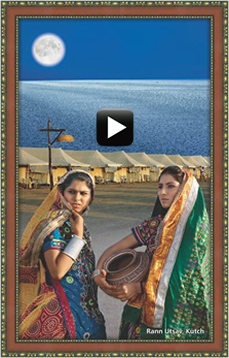
In India’s summer monsoon, the flat desert of salty clay and mudflats, which average 15 meters above sea level, fill with standing waters. The greatest extent between the Gulf of Kutch on the west and the Gulf of Cambay on the east get united during the monsoon.[citation needed]
The area was a vast shallow of the Arabian Sea until continuing geological uplift closed off the connection with the sea, creating a vast lake that was still navigable during the time of Alexander the Great. The Ghaggar River, which presently empties into the desert of northern Rajasthan, formerly emptied into the Rann of Kutch, but the lower reaches of the river dried up as its upstream tributaries were captured by the Indus and Ganges thousands of years ago. Traces of the delta and its distributary channels on the northern boundary of the Rann of Kutch were documented by the Geological Survey of India in 2000.
The Luni River, which originates in Rajasthan, drains into the desert in the northeast corner of the Rann. Other rivers feeding into the marsh include the Rupen from the east and the West Banas River from the northeast.[citation needed]
There are sandy islets of thorny scrub, forming a wildlife sanctuary[4] and a breeding ground for some of the largest flocks of greater and lesser flamingos. Wildlife, including the Indian wild ass, shelter on islands of higher ground, called bets, during the flooding.
Climate
This is one of the hottest areas of India – with summer temperatures averaging 44 °C (111 °F) and peaking at 50 °C (122 °F). Winter temperatures reduce dramatically and can go below 0 °C (32 °F).[5]
Flora and fauna
The plant life of the marsh consists of grasses such as apluda and cenchrus species along with dry thorny shrubs.
In winter, the Great Rann of Kutch is a breeding ground for flamingos and pelicans.[6] It is the only place in India where flamingos come to breed and is home to 13 species of lark.[7] The Little Rann of Kutch is famous for the Indian Wild Ass Sanctuary, home of the world’s last population of Indian wild ass (equus hemionus khur or khar). Other mammals of the area include the Indian wolf (canis indica), desert fox (Vulpes vulpes pusilla), golden jackal (canis aureus), chinkara (gazella bennettii), nilgai (boselaphus tragocamelus), and the near threatened blackbuck (antilope cervicapra).
The marshes are also a resting site for migratory birds, and are home to over 200 species of bird including the threatened Lesser Florican (eupodotis indica) and Houbara bustard (chlamydotis undulata).
Religions
Many religions are found here like Hinduism, Jainism, Sikhism & Islam.
Threats and preservation
Although most of the marsh is in protected areas, the habitats are vulnerable to cattle grazing, firewood collection and salt extraction operations, all of which may involve transportation that disturbs wildlife. There are several wildlife sanctuaries and protected reserves on the Indian side in the Rann of Kutch region. From the city of Bhuj, various ecologically rich and wildlife conservation areas of the Kutch/Kachchh district can be visited such as Indian Wild Ass Sanctuary, Kutch Desert Wildlife Sanctuary, Narayan Sarovar Sanctuary, Kutch Bustard Sanctuary, Banni Grasslands Reserve and Chari-Dhand Wetland Conservation Reserve.
Indo-Pakistan international border
In India the northern boundary of the Greater Rann of Kutch forms the International Border between India and Pakistan, it is heavily patrolled by India’s Border Security Force (BSF) and Indian Army conducts exercises here to acclimatize its troops to this harsh terrain.[citation needed]
This inhospitable salty lowland, rich in natural gas, was one scene of perennial border disputes between India and Pakistan that, in April 1965, contributed to the Indo-Pakistani War of 1965. Later the same year, Prime Minister of the United Kingdom Harold Wilson persuaded the combatants to end hostilities and establish a tribunal to resolve the dispute. A verdict was reached in 1968 which saw Pakistan getting 10% of its claim of 9,100 square kilometres (3,500 sq mi). 90% was awarded to India, although India claimed 100% of the region. Tensions spurted again in 1999 during the Atlantique Incident.[8]
Chir Batti
At night, an unexplained strange dancing light phenomena known locally as Chir Batti (ghost lights) occurs in the Rann,[9] the adjoining Banni grasslands, and the seasonal wetlands.[10]
Popular culture
J. P. Dutta’s Bollywood film Refugee is shot on location in the Great Rann of Kutch amongst other locations in the Kutch district. This film is said to have been inspired by the famous story by Keki N. Daruwalla based around the Great Rann of Kutch titled “Love Across the Salt Desert”,[11] included as one of the short stories in the School Standard XII syllabus English text book of NCERT in India.[12] The film crew traveled from Mumbai and was based in the city of Bhuj and most of the film shooting took place in the Great Rann of Kutch (also on BSF-controlled “snow white” Rann interior), villages and Border Security Force (BSF) Posts in Banni grasslands and the Rann, Tera fort village, Lakhpat fort village, Khera fort village, a village in southern Kutch, some ancient temples of Kutch and with parts and a song filmed on set in Mumbai’s Kamalistan Studio.
Amitabh Bachchan in his advertisements for Gujarat Tourism titled Khushboo Gujarat Ki has also extensively shot in the Rann of kutch.[13]
Several scenes in Salman Rushdie’s Booker Prize winning novel Midnight’s Children take place in the Rann of Kutch, including a scene where the protagonist faints from heat stroke in the Rann’s famously brutal climate.
Tourism
The Government of Gujarat hosts an annual 3 day festival called the Rann Utsav (festival of the Rann), where tourists can see the various sights of the Rann as well as get a taste of the local culture, cuisine and hospitality. Specially built local houses are also used to house tourists to give them a taste of them.[14] Many adventure clubs and travel clubs organize expeditions.
Handicrafts
The unique handicrafts of Kutch are world famous.[15] A lot of women and young girls make their living by selling different types of embroidered cloths. The embroidery is of various styles such as Rabari, Ahir, Sindhi, Banni, Mutwa, Ari and Soof – and some styles include mirror or bead inlay.
See also
Rann of Kutch (Gujarati: કચ્છનું મોટું રણ Sindhi: رڻ ڪڇ) is a salt marsh located in the western tip of Gujarat (primarily the Kutch district),India. It is divided into two main parts; Great Rann of Kutch and Little Rann of Kutch.It is located in the Thar Desert bio-geographic area in the Indian state of Gujarat. The area is also spread across the Sind province in Pakistan. This is actually a seasonally marshy region and the word `Rann` means `salt marsh`. Kutch is the name of the district in Gujarat where this region is situated. The marsh covers a huge area of around 10,000 square miles and is positioned between the Gulf of Kutch and the mouth of the Indus River in southern Pakistan. To the northeast corner of the Rann of Kutch lies Luni River, originating in Rajasthan. The fact that the area has desert on one side and the sea on the other makes the Rann of Kutch an interesting region. . The climatic and geo-morphological expansion of the grassland and deserts of the Rann of Kutch has formed
War history
In June 1965, prior to the outbreak of the 1965 India-Pakistan War, India and Pakistan had a border skirmish in the Rann of Kutch region near the south-eastern coastline of Pakistan. The PAF was tasked with providing point-defence to the Rann of Kutch region to prevent the Indian Air Force (IAF) from entering Pakistani airspace and attacking Pakistan Army positions. On 24 June 1965, an IAF Ouragan fighter (Serial No. IC 698), flown by Flt. Lt. Rana Lal Chand Sikka of No. 51 Auxiliary Squadron from the IAF’s Jamnagar Air Station entered Pakistani airspace. A PAF F-104A Starfighter from No. 9 Squadron intercepted the IAF fighter near Badin in Sindh, Pakistan. Just as the PAF pilot locked on to the Indian fighter and was about to release his AIM-9B Sidewinder Air-to-Air Missile (AAM), the Indian pilot lowered his aircraft’s landing gear (an internationally-recognized sign of aerial surrender). The IAF pilot landed at an open field near Jangshahi village near Badin. The IAF pilot was taken prisoner and released on 14 August 1965- as a goodwill gesture on the 18th Anniversary of Pakistan’s Independence Day. The IAF Ouragan fighter was retained by the PAF as a trophy and flown by a PAF pilot to an airbase in Karachi. (NOTE: This event is not to be confused with the surrender of an IAF Gnat on 4 September 1965 during the 1965 India-Pakistan War, which is on display at the PAF Museum Karachi)
The Rann of Kutch, also known as the Great Rann of Kutch (there’s a Little Rann of Kutch as well), is a remarkable place to visit in Gujarat. It’s the world’s largest salt desert, measuring over 16,000 square kilometers. What makes it even more amazing is that it’s underwater during the main monsoon season in India. For the remaining eight months of the year, it’s an enormous stretch of packed white salt. Here’s all the information you need to visit it.
Rann of Kutch Location
The vast expanse that is the Rann of Kutch borders the top of the Kutch district. It’s best approached from Dhordo, approximately 86 kilometers from Bhuj, which is being developed by the Gujarat government as the Gateway to the Rann of Kutch. Dhordo is on the edge of the Rann of Kutch. It’s a good idea to stay there, or nearby Hodka, to conveniently make the trip.
Rann of Kutch Accommodation Options
The most popular choice is the Gateway to Rann Resort at Dhordo. It’s made up of characterful Kutchi Bhungas (mud huts), traditionally crafted and decorated with handicrafts. Expect to pay around 3,500 rupees for an air conditioned double, per night with meals included.
Another recommended option is the Shaam-e-Sarhad (Sunset at the Border) Village Resort in Hodka. Hodka is one of the top rural tourism destinations in India, and the resort is owned and managed by the local residents. You can choose to stay in tents (3,200 rupees per night for a double) or traditional Bhungas (4,800 rupees per night for a double), and both have attached bathrooms and running water. Visits to local artists villages are a highlight.
Best Time to Visit the Rann of Kutch
The Rann of Kutch begins to dry up in October every year, steadily transforming into the desolate and surreal salt desert. The tourist season runs until March.
It’s best to head out into the Rann of Kutch only in the early morning or evening, otherwise the salt can be blinding. The full moon is the best time of month to see it, and cultural programs are usually held at Dhordo then. A moonlight Rann camel safari is magical.
For a real cultural extravaganza, visit during the month-long Rann Ustav, which usually begins in mid-late December. The government sets up hundreds of luxury tents on the edge of the Rann of Kutch for visitors.
Permits for Visiting the Rann of Kutch
The Rann of Kutch is quite a sensitive area, due to its proximity to the Pakistani border. Therefore, written permission is required to visit it. This is obtainable from the Gujarat Police DSP office in Bhuj near Jubilee Ground (it’s closed Sundays, and every second and fourth Saturday).
Reaching the Rann of Kutch
The resorts mentioned above will arrange transport for you from Bhuj. There are a couple of ways of getting to Bhuj.
- If taking a train, it’s most convenient from Mumbai (15 hours).
- Flights to Bhuj are also available from Mumbai.
- Buses to Bhuj are available from many places in and around Gujarat, and the road is in good condition.
Other Ways to See the Rann of Kutch
If you want to see the Rann of Kutch from a different perspective, the Kalo Dungar (Black Hill) offers a panoramic view from 462 meters above sea level. You can see all the way across to the Pakistani border. Kalo Dungar is accessible via the rather uninteresting village of Khavda, which is 25 kilometers away, and around 70 kilometers from Bhuj. It’s best to take your own transport as public transport is infrequent. The old Lakhpat Fort (140 kilometers from Bhuj) also provides a fabulous view of the Rann of Kutch.

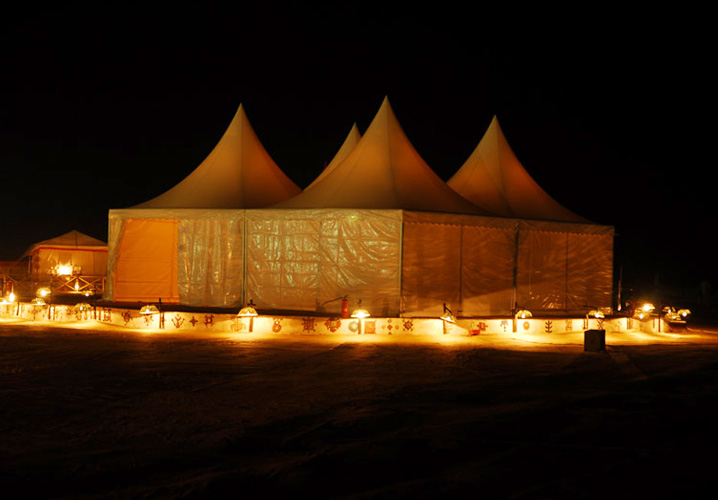
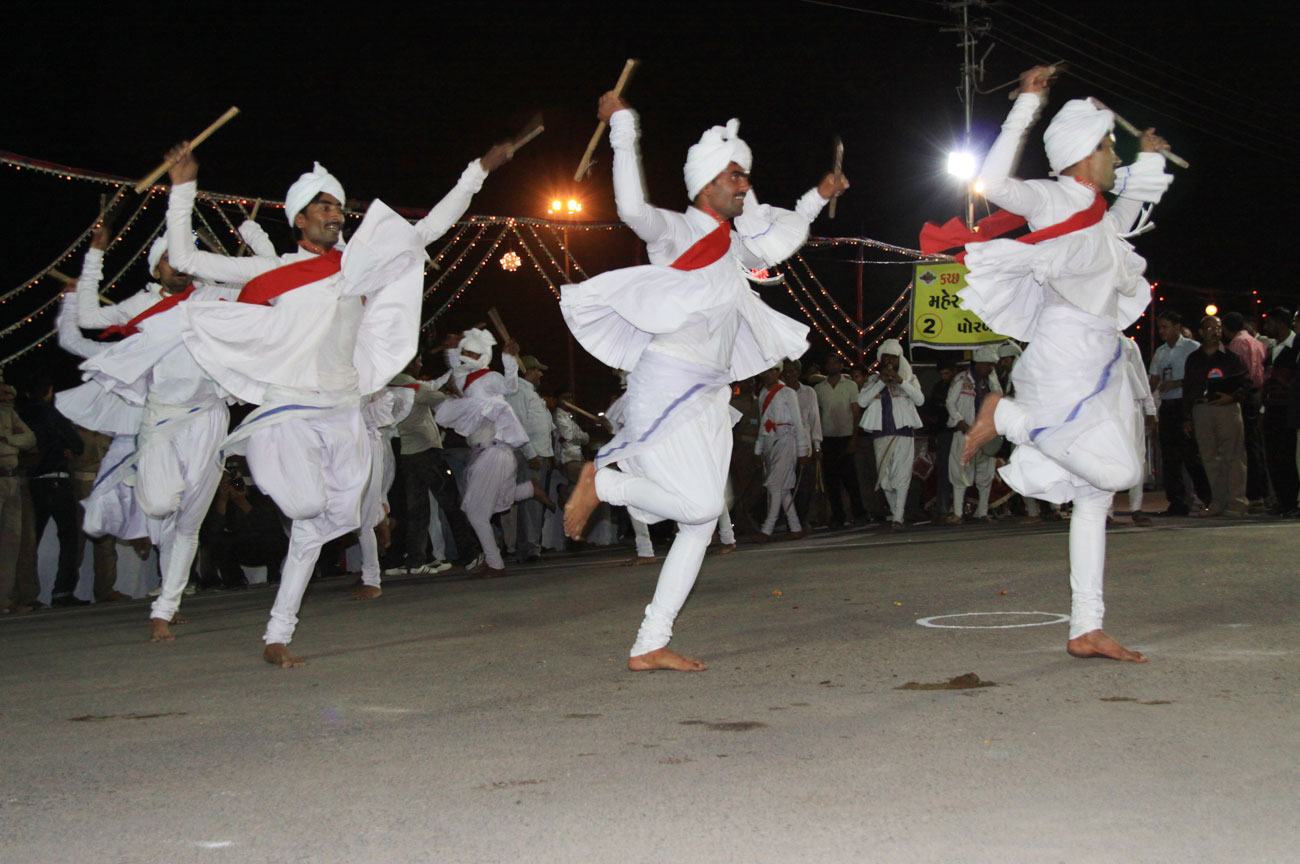
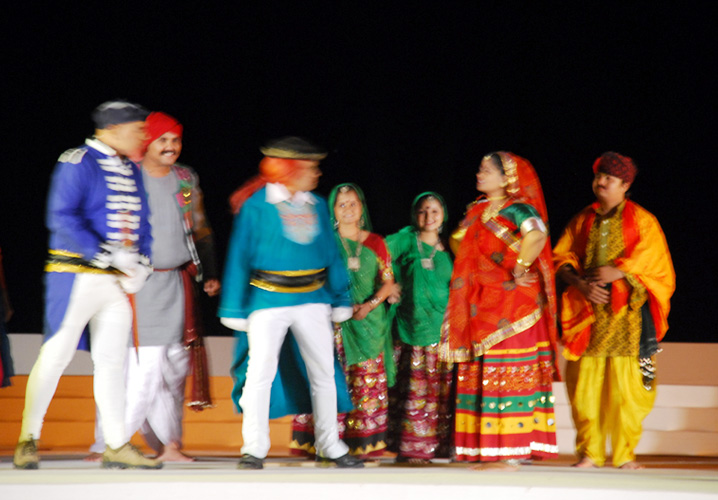
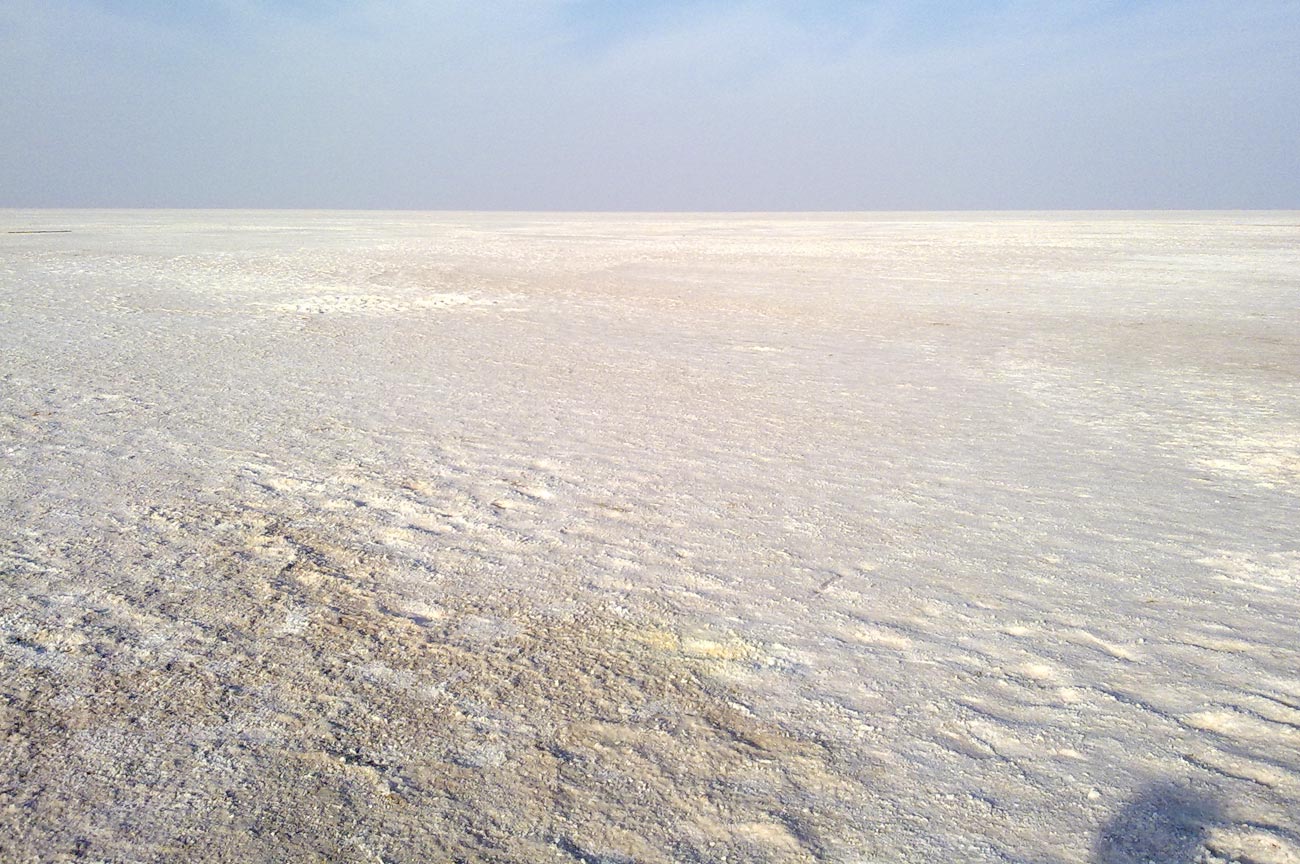
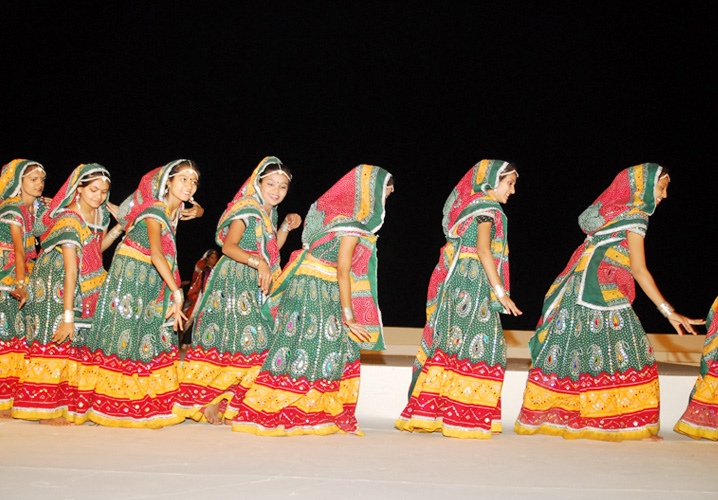


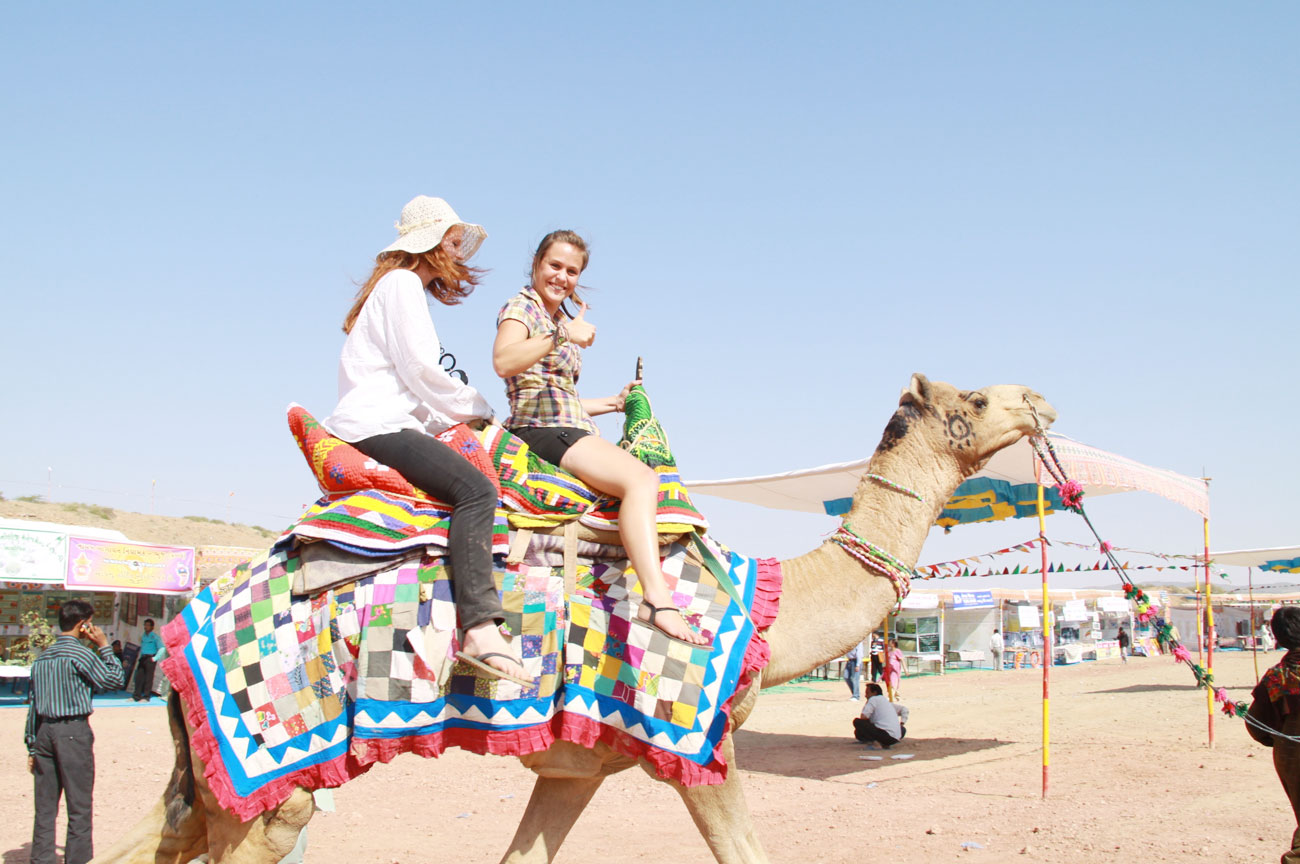
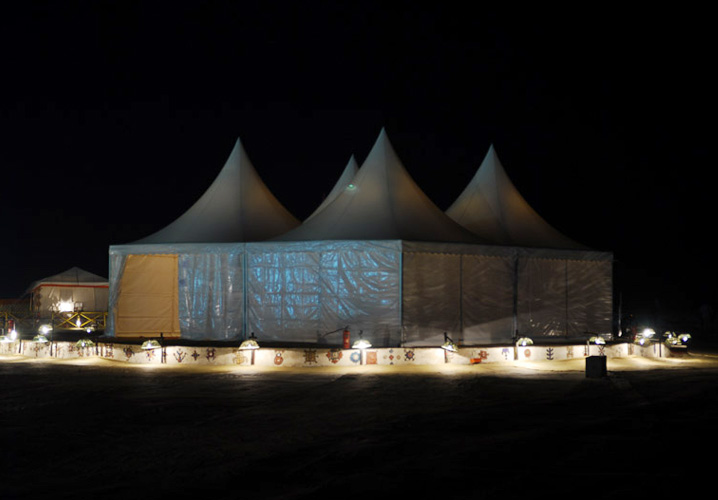
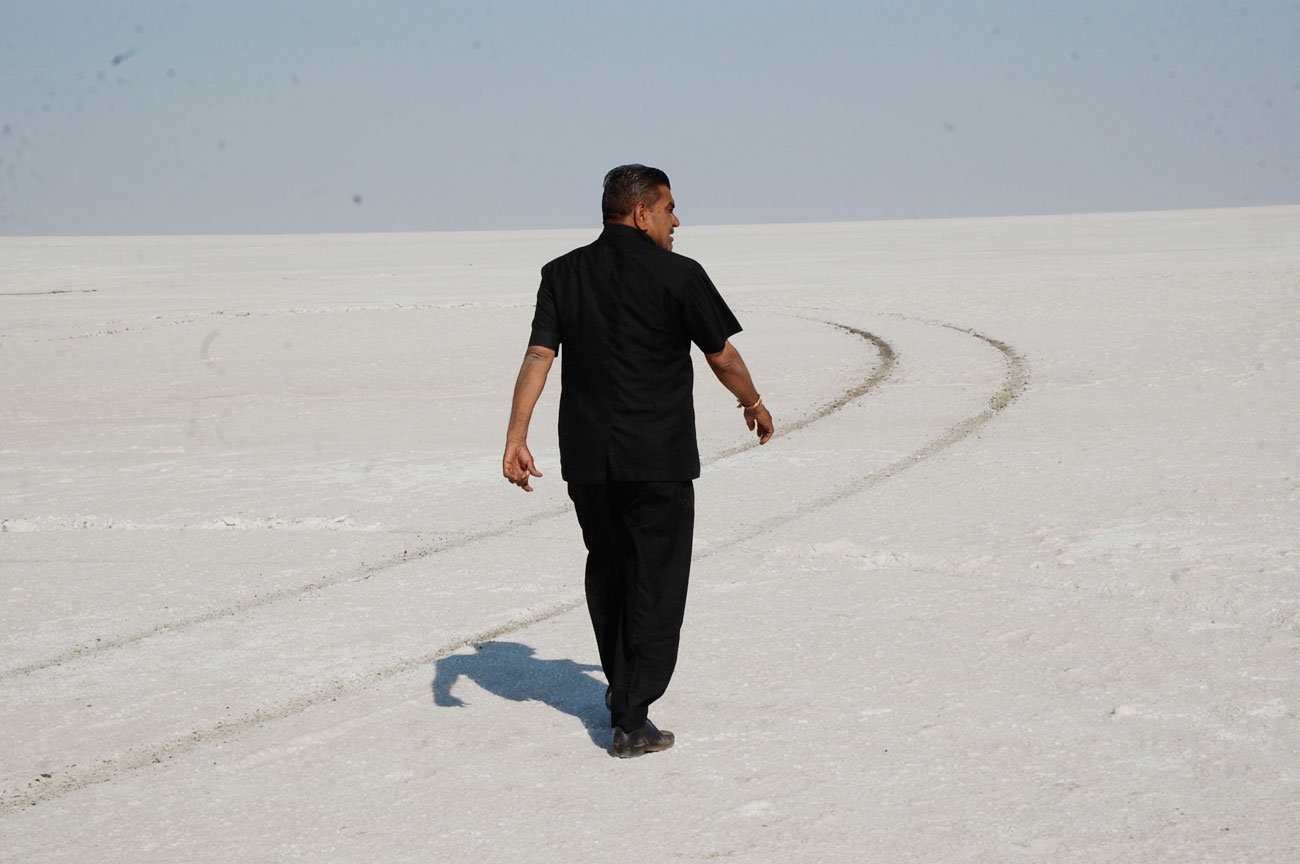
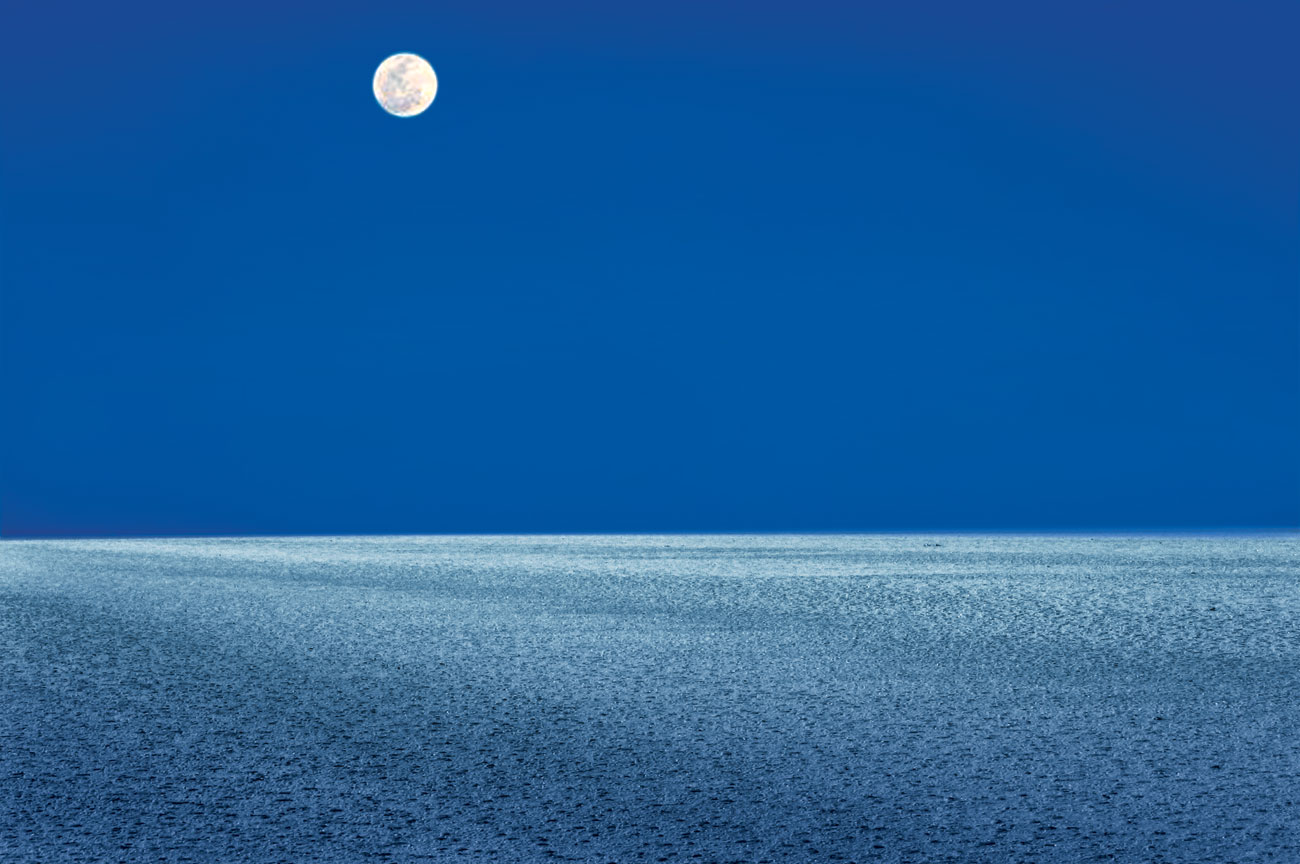
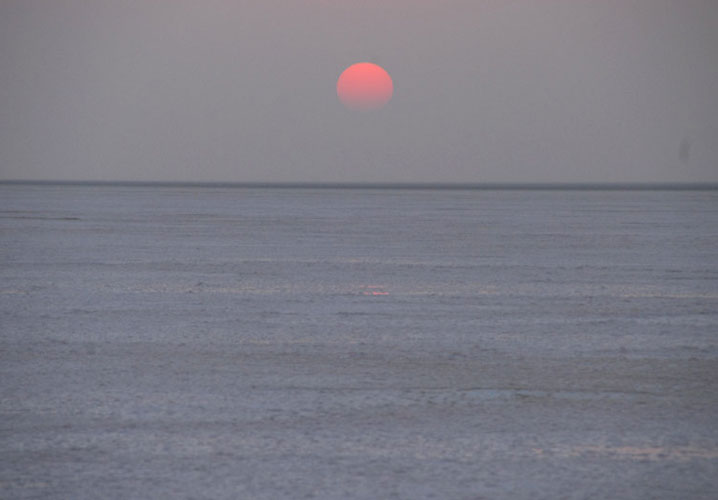
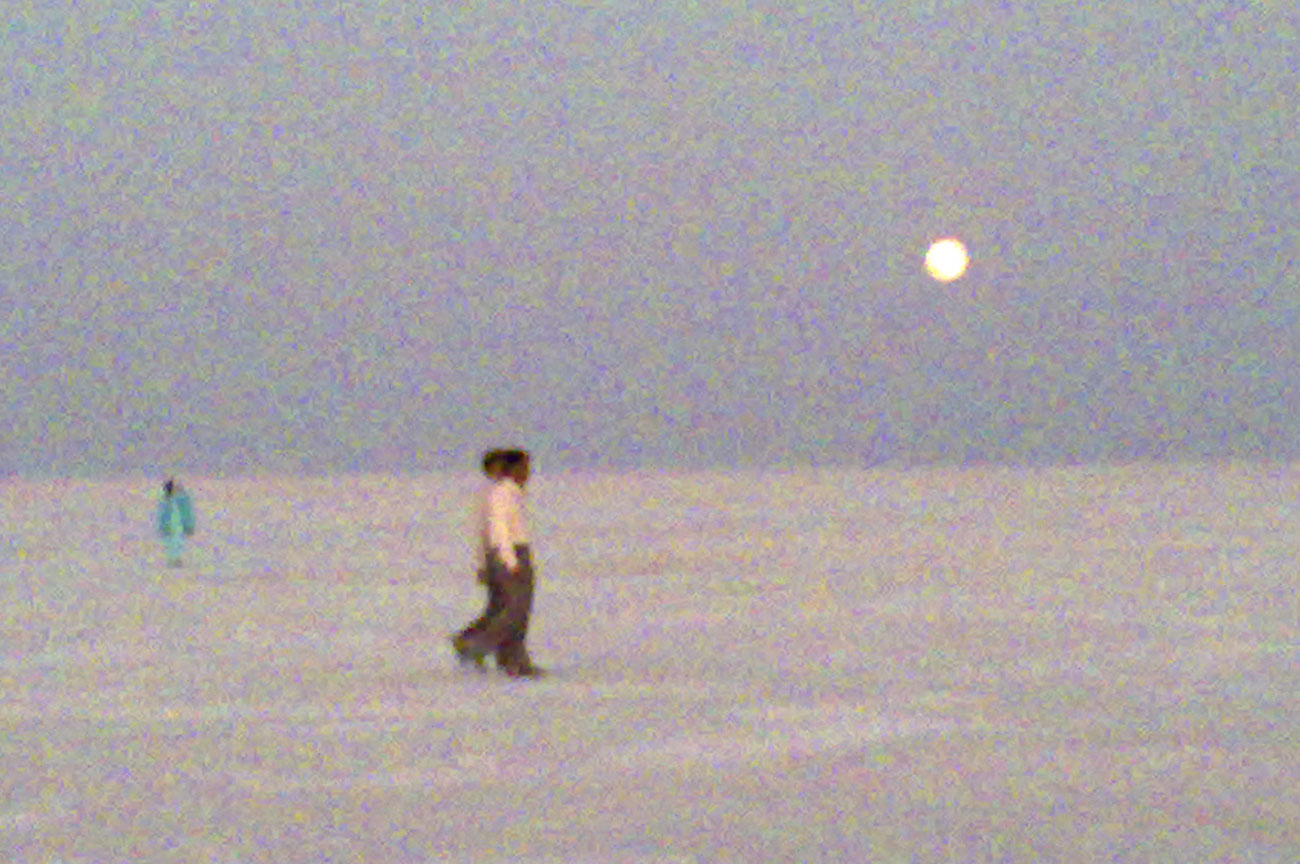
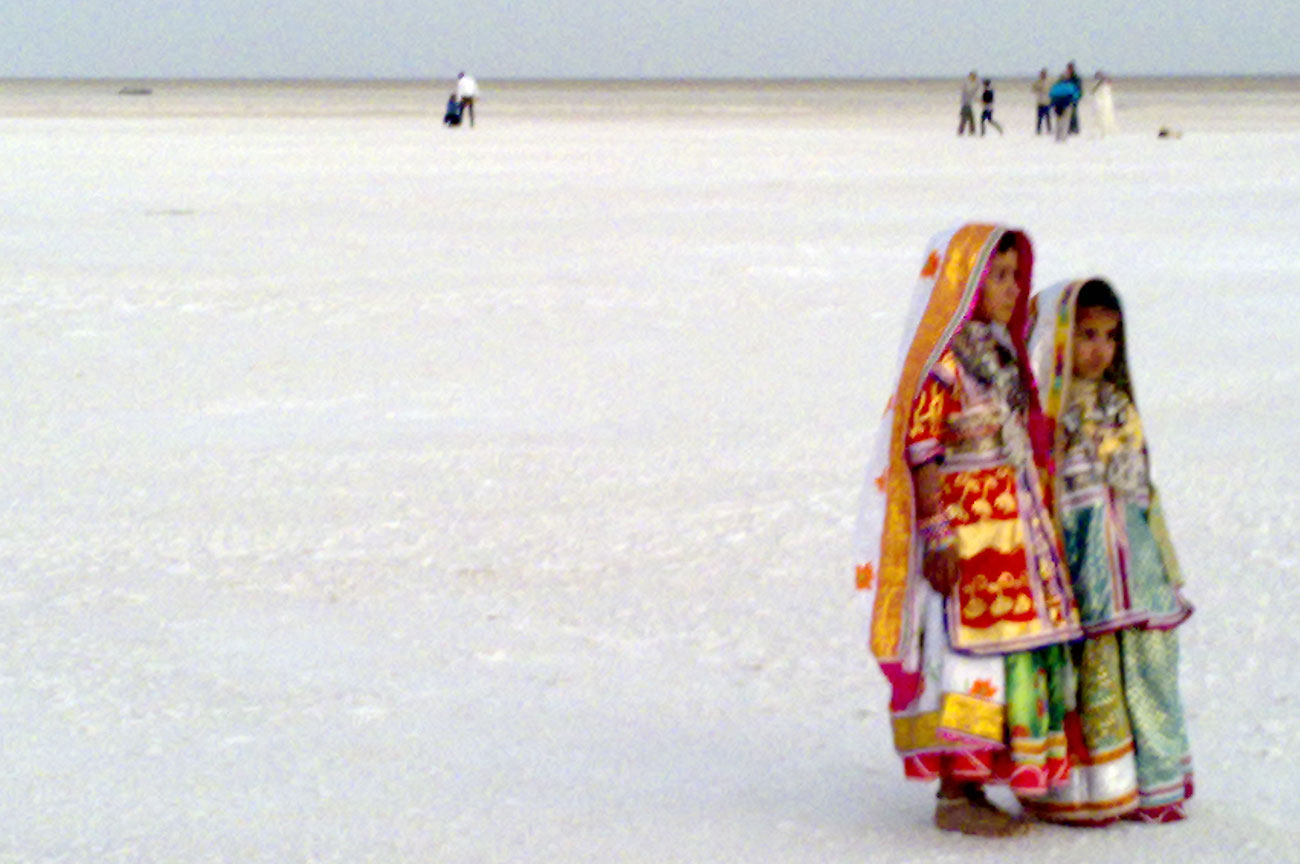

Leave a Reply